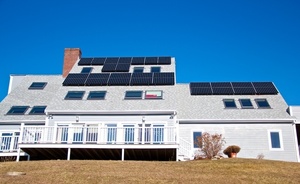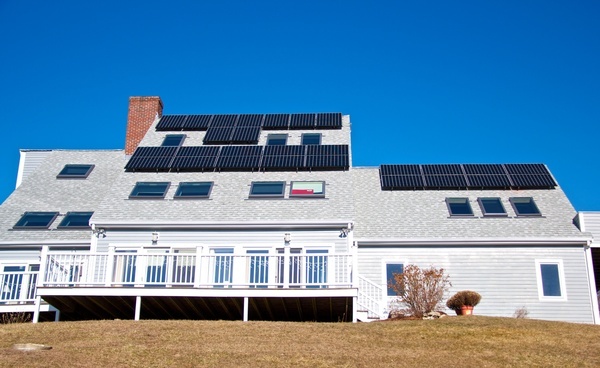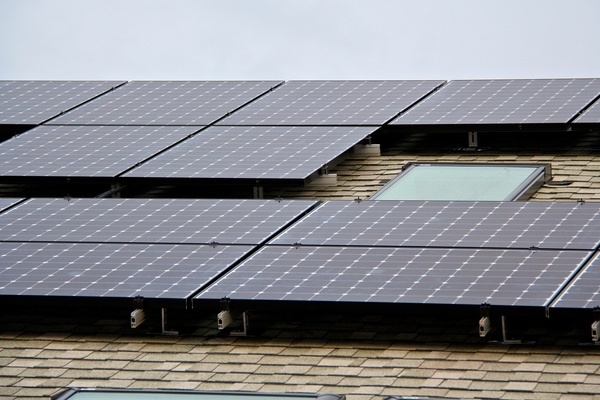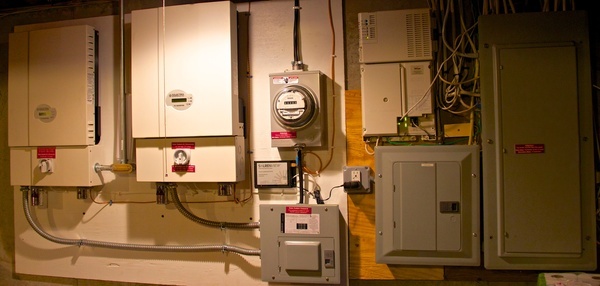 In snowy Massachusetts
you can finance a solar system with little money down
and complete payoff in 11 years.
Get the Georgia legislature to pass
HB 874 and we’ll be able to do this in sunny Georgia, too.
In snowy Massachusetts
you can finance a solar system with little money down
and complete payoff in 11 years.
Get the Georgia legislature to pass
HB 874 and we’ll be able to do this in sunny Georgia, too.
Used with permission from howeowner Carl Howe. -jsq
People seem interested so I’ll share details of our solar installation in Stow, MA.
Full disclosure: I know the president of our solar installation firm socially (he’s a friend of a friend of ours), and like many solar installers, they do pay referral fees if others sign up based on a recommendation from an existing customer. Should anyone decide to do business with our installer, New England Clean Energy, please mention my name.
We used New England Clean Energy from Hudson MA. I believe that they are one of, if not the, highest quality installer in our area. They have more than 300+ installations in MA and NH. Of course, SolarCity and others are also in the region, so they compete with them regularly, and anyone interested in solar has many alternatives you can choose from (including big chains). We preferred working with a local company we knew and we have had excellent experiences working with local contractors (let me know if you want an air conditioning installer too).
As noted in my prior email, we own our system. We financed it using two loans: a zero percent loan for the federal rebate, which pays 1/3 of the total cost of the system; that loan will be repaid by our income tax refund in the next few weeks. The rest of it is financed over 11 years at 3% APR. The money we saved on the capital cost of the solar installation we paid instead to replace and upgrade our roof and 18 skylights (see photos below) so that we wouldn’t need to touch any of those things for the lifetime of the solar panels or longer.
Our site is unusually good for solar production. Our house faces due south and the roof pitch is almost exactly our latitude. As such, the average Solmetric reading is 97% of ideal and during many parts of the year, it is 99% of ideal. We considered ground mounting, but our roof is so good, it would have been a shame not to use it and my wife hated the look of ground mounted panels.
Our installation has 27 SunPower SPR-X21-335-WHT panels mounted on two roofs. That produces 9.045 nominal kW at full power. Actual peak results in the first month have been >9.2 kW at noon, which I understand is because the panels are more efficient when cool (and our winter has definitely been cool). Their efficiency is actually lower in summer months, but you get more hours of sunshine th at more than makes up for it.
The panels are split into two arrays: one with 19 panels and one with 8. The “big” array (19 panels) feeds a Solectria PVI-6500-240V 6500W inverter, while t he smaller one feeds a Solectria PVI-3000-240V 3000W inverter. The two inverters feed a utility-grade meter for SREC purposes and a web server which monitors the performance of the installation. We have another two-way utility meter moun ted on the outside of the house.
The inside meter measures how much power the array produces. The outside meter measures both the power flowing to the grid and the power flowing from the grid throughout the month. If those two figures—kWhs flowing to us and kWhs supp lied from us—are the same, our utility bill is $0 for that month. Our system is sized such that we expect to use more power than we produce most months for economic reasons. In our net metering world, we buy power at retail prices (roug hly $0.15 / kWh), but we sell at wholesale prices ($0.04 / kWh). Given the capital costs of a solar system, cottage solar power farming isn’t really a money-making business unless you have a lot of cheap cash laying around that you don’t know what to do with.
Everyone asks about snow, so I’ll answer that question: Yup, the panels get covered with snow during snowstorms and they produce very little power when that happens (if it is less than 6 inches or so, they do still produce power from the light that shines through the white stuff). However, they are mounted at a 45 degree angle, and if we get more than about 2 hours of strong sunshine after the storm, the snow slides right off.
To give you a sense of timeline, we signed our documents on October 9, 2013. Our roof was replaced during October/November, and our solar system was installed in December during very challenging conditions including snow and 12 degree weather and high winds (see our review of New England Clean Energy on the SunPower site under the NECE installer page). The installation was completed on December 20. Our inspections and utility certification took place over the next 30 days or so, and we got PTO (permission to turn on) on January 29, 2014.
You can see pictures of the installation including the inverters and monitoring web server here (the photos should have captions, but I haven’t figured out how to make them show).
https://www.icloud.com/photostream/#A2GY8gBYG4WjgP
You can see how much power we are currently generating and its history in real time here:
http://www.solrenview.com/SolrenView/mainFr.php?siteId=2550
Feel free to ask more questions. If anyone from Stow is around, we’re hosting an open house for Stow Solar on March 15 from 10-2 pm for folks to ask questions and get involved in the town solar initiative (you get big discounts if you participate). We’ll also probably host a solar party on the deck for people not from Stow during warmer weather in April or May to help others make the jump to solar.
Carl
BBN ’78-96
Short Link:


